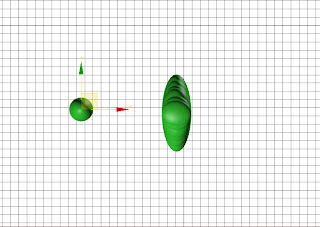This feature will guide you how to customize viewport layouts in Autodesk 3ds Max Design. You can use this technique to customize your workspace as per your requirements. This is very great technique to segregate your work in different workspaces to reduce time and extra effort. In other words, you can easily switch between a number of viewports. You can use the viewport layout bar to manage your viewport layout settings. This bar is opened by default along with Autodesk 3ds Max Design interface.
To learn how to use this customization technique, follow the steps given below:
- Start Autodesk 3ds Max Design; the default interface is displayed along with the viewport layout bar, as shown in Figure 1.
Figure 1 The default interface displayed
- Choose the Create a New Viewport Layout Tab icon from the viewport layout bar; the list of different in-built layouts is displayed in the Standard Viewport Layouts window, as shown in Figure 2.
Figure 2 The list of in-built layouts displayed
- Choose any one tab from the list of Standard Viewport Layouts window; the new workspace is displayed, as shown in Figure 3. Note that the new tab is also added in the viewport layout bar.

Figure 3 The new workspace displayed
- To rename this workspace, righ-click on the newly added tab; a flyout is displayed. In this flyout, enter the name as Workspace 1 in the Name text box, as shown in Figure 4. Press the ENTER key to confirm the changes. You can also delete this tab by clicking on the Delete Tab, refer to Figure 4.
Figure 4 Renaming the workspace
Next, you will start working on this newly created workspace.
- Choose Create > Geometry in the Command Panel. Make sure the Standard Primitive options is selected in the drop-down list, as shown in Figure 5.
Figure 5 The Command Panel
- Invoke the Sphere tool from the Object Type rollout and create a sphere in any viewport, as shown in Figure 6.
Figure 6 Creating a sphere
- Activate the Front viewport. Select the sphere by invoking the Select and Move tool. Hold the SHIFT key and drag the sphere to the right. Now, release the mouse and the SHIFT key; the Clone Options dialog box is displayed. Select the Copy radio button and enter 5 in the Number of Copies spinner, as shown in Figure 7. Choose the OK button; the five copies of sphere are created, as shown in Figure 8.
Figure 7 The Clone Options dialog box
Figure 8 Five copies of sphere created
- Invoke the Select and Move, Select and Rotate, and Select and Uniform Scale tools from the Main Toolbar. Next, modify the shape of the spheres and align them in all viewports, as shown in Figure 9.
Figure 9 Modifying and aligning the spheres
- Choose Group > Group from the menu bar; the Group dialog box is displayed. Enter the name Sphere01 in the Group name text box to group these spheres, as shown in Figure 10.
Next, you will create another sphere in the Perspective viewport and animate it in such a way so that it
will revolve round the Sphere01.
will revolve round the Sphere01.
Figure 11 The time controls
- Enter 25 in the current frame spinner and press the ENTER key.
- Invoke the Select and Move tool from the Main Toolbar and Selection Lock Toggle button on the status bar.
- Activate the Top viewport and change the view from Wireframe to Shaded.
- Select the sphere in the Top viewport and drag it in such a way so that it appears above the Shpere01 in the viewport, as shown in Figure 12.
Figure 12 Aligning sphere on the above of Sphere01
- Enter 50 in the current frame spinner and press the ENTER key to move the next frame.
- Move the sphere to the left of the Sphere01, as shown in Figure 13.
Figure 13 Aligning sphere on the left of Sphere01
- Enter 75 in the current frame spinner and press the ENTER key to move to next frame. Alternatively, you can directly drag the Time Slider to frame 75.
- Similarly, move the sphere below the Sphere01
- Enter 100 in the current frame spinner and press the ENTER key.
- Move sphere back to its original position, as shown in Figure 14.
- Choose the Toggle Auto Key Mode button to exit the animation mode.
- Make sure the Perspective viewport is active and then choose the Play ANimation button to play the animation. The sphere will rotate around the Sphere01, as shown in Figure 15.
Figure 15 Sphere rotates around the Sphere01
- Save the scene.














No comments:
Post a Comment